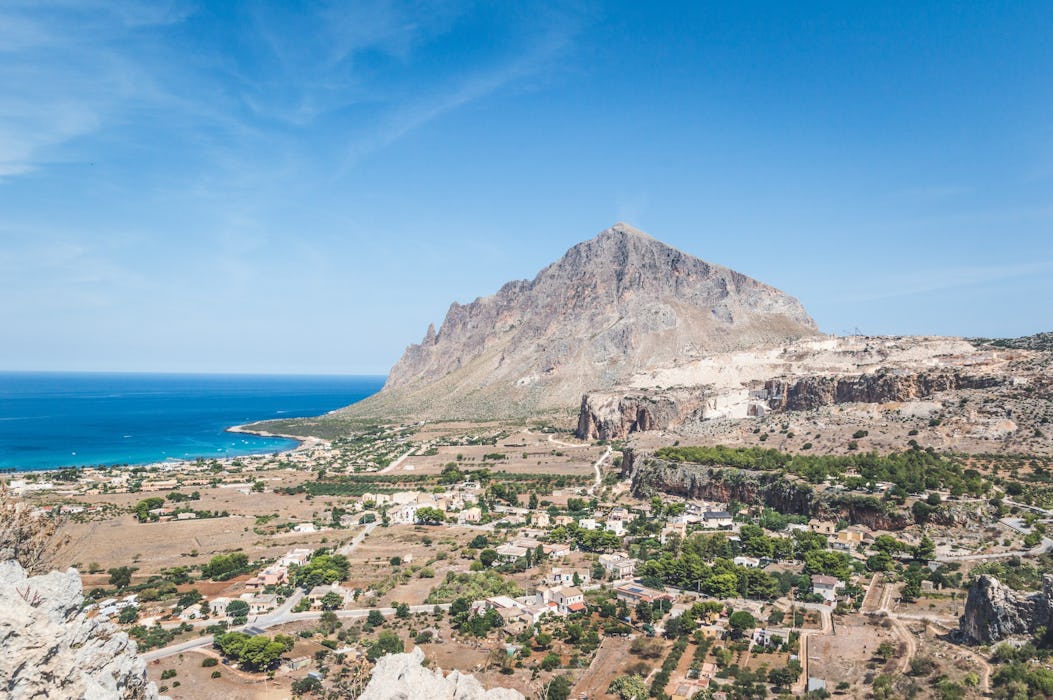Let us help you plan the perfect sailing trip
Provide your travel details, receive free offer and enjoy your holiday!
Sicily is Italy's largest and most densely populated island, located in the Mediterranean Sea just 160 km northeast of Tunisia.
The island sits just west of the Apennine Peninsula's southern tip, separated from the mainland by the Strait of Messina. The regional capital is the city of Palermo, situated on the northern coast of the island.
Sicily is a stunning place of immense history and rich culture, where people have met and prospered for millennia, existing in the shadow of Europe's largest and most active volcano - Etna.
Meeting point of the Mediterranean Sea
According to some historians, Sicily has been inhabited for the last 10,000 years. Situated centrally on the Mediterranean Sea, its strategic location has made the island an obvious target for various nations and tribes as they ventured on their conquests.

Following the Greek and Roman rule (Sicily became the first Roman province in the 3rd century BC) in the Ancient Era, the island was under Byzantine control until it fell to the Arab conquest in 965.
Sicily was conquered in 1060 by the Normans, who pushed to Latinise the island and created some impressive pieces of architecture that stood the test of time.
During the Middle Ages, the island was a part of the Kingdom of the Two Sicilies. After that, it fell under the rule of the Bourbons in the 18th century.
In the 19th century, the island was liberated from the Bourbons following an uprising led by the revolutionary Giuseppe Garibaldi in 1860 and incorporated into the Kingdom of Italy the following year.
After World War II, which brought severe destruction to the island, Sicily gained regional autonomy in 1947 and became a part of sovereign Italy.
Today, Sicily proudly displays all of the landmarks and architectural feats left by the previous rulers. There are clues everywhere indicating how much different rulers influenced this island, yet the everyday life on the island is still unmistakably Italian.
Stunning coast, imposing volcanoes and historic cities
Sicily's landscape is primarily mountainous with intense and regular seismic and volcanic activity. The island's most prominent feature is Europe's highest active volcano - Mount Etna, located just north of the city of Catania on the eastern coast.
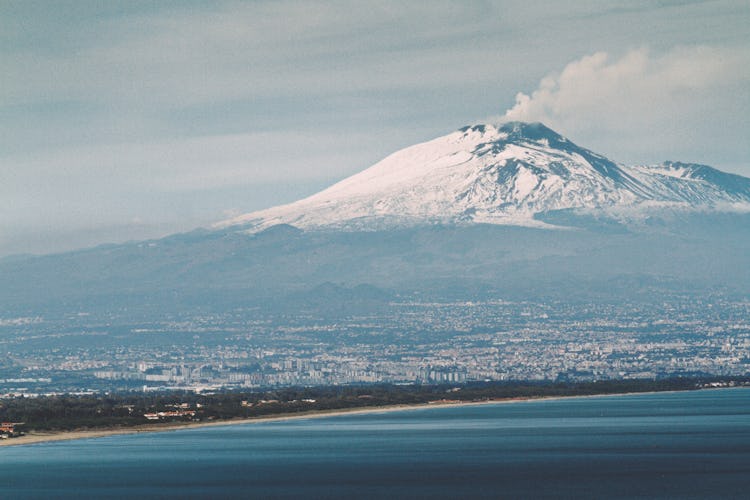
The coastal region of Sicily is one of the most alluring stretches of coast in the Mediterranean.
Beautiful sandy beaches sit adjacent to the warm and calm sea, offering the ideal setting for an unforgettable summer vacation.
Sicily is also perfect for a sailing trip - the coast is full of historic cities and charming resorts. The Aeolian Islands, a fascinating volcanic archipelago found nearby, are also very worth the visit to explore all they have to offer.
You will find plenty of secure anchorages and well-equipped marinas as you sail around Sicily, while the calm and warm weather will make your sailing trip more relaxed.
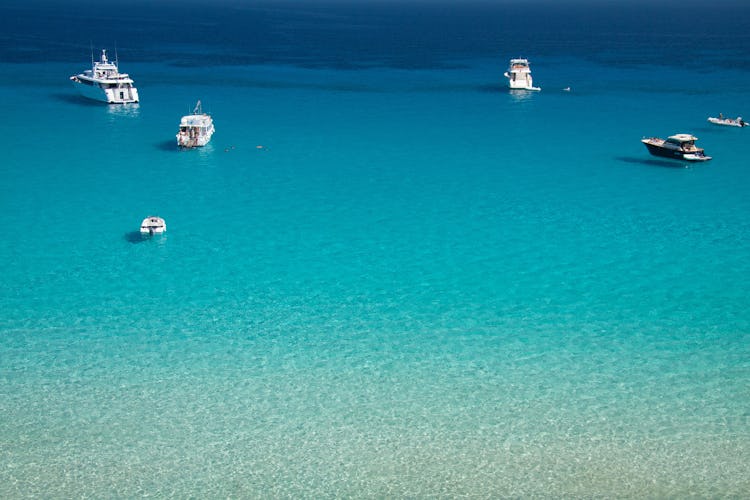
Those wanting to learn more about the history of the island should explore cities like Palermo, Catania and Messina. Here you will be able to experience the unique blend of different cultures that influenced Sicily over multiple centuries. These cities will enchant you with their fascinating blend of architectural styles, intriguing culinary delights, and many festivals all year round.
Making your way along the coastline, charming coastal resorts and fishing villages will greet you. Places like Capo d'Orlando, Furnari, Cefalu and many others house beautiful beaches, protected marinas and an abundance of attractions and historical landmarks.
Architectural wonders
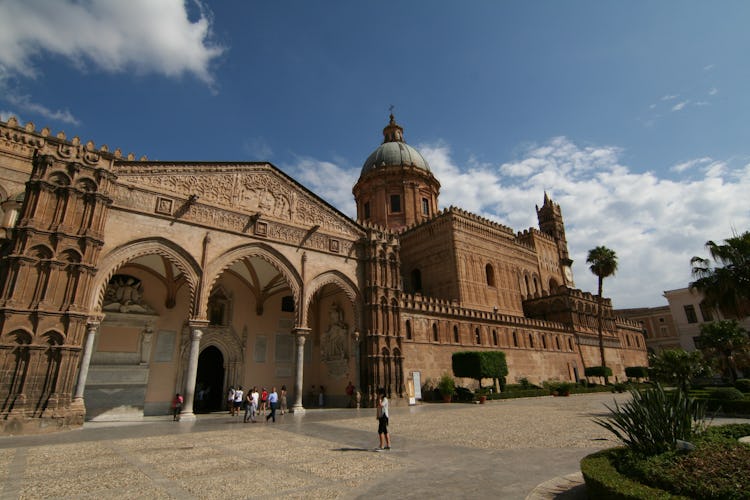
Besides the obvious archaeological sites and landmarks dating from the Ancient and Classical era, Sicily is also full of artistic and architectural gems from later periods. For instance, taking a walk around Palermo, you'll be able to see Arab domes and arches, Byzantine mosaics and Norman palace walls.
Visit the southeast of Sicily, and you'll find a stunning selection of baroque architectural masterpieces: from the golden domes and palaces of Noto to the intriguing cathedrals found in Ragusa and Modica.
Despite not being as famous and popular as other Italian cities, Sicily has an abundance of cultural riches that are also wonderfully diverse, making it an even more attractive travel destination.
Norman Palace
The Royal Palace of Palermo (also known as the Norman Palace) was the seat of the Kings of Sicily during the Norman rule of the island.
The palace is highly contrasted as the rigorous Medieval exterior meets with the luxurious interior. Some areas of the Norman Palace are not accessible to visitors. The most important ones, like the Palatine Chapel, the Royal Apartments and the exhibition space, are free to explore and marvel in. The most impressive display is the Palatine Chapel's gold-covered mosaics, where you will find a mixture of Byzantine art with Norman and Arab construction techniques.
Massimo Theatre
The Teatro Massimo Vittorio Emanuele is the largest theatre in Italy and one of the largest in Europe. This opera house is located on the Piazza Verdi in Palermo and was dedicated to King Victor Emanuel II upon its completion in the late 18th century. The design of the theatre was inspired by ancient and classical Sicilian architecture and features busts of famous Italian composers. The theatre is renowned for its perfect acoustics and was featured in the final scenes of Francis Ford Coppola's movie The Godfather Part III.
The Cathedral of Monreale
The Cathedral of Monreale can be found in Monreale, a town located just 7 km south of Palermo. This stunning example of Norman architecture dates back to the 13th century and displays many beautiful mosaics, some made of pure gold. The cathedral's marble floor and the detail of the columns are considered among the most beautiful in the world.
The cathedral occupies a large piazza enhancing the cathedral's facade, surrounded by an endless stream of cafes and restaurants.

The Cathedral of San Nicolo
The Cathedral of San Nicolo can be found in the southeast of Sicily, in the town of Noto - the centre of Sicilian Baroque. The cathedral stands on top of a monumental staircase, dominating this charming Sicilian town. The construction of the church started following the massive earthquake that demolished the town and was completed in 1770.
The cathedral incorporates baroque motifs and classical elements and is also included in the UNESCO list of world heritage sites.
Villa Romana del Casale
Villa Romana del Casale, a UNESCO World Heritage site, is located about 3 km from the town of Piazza Armerina, in the interior of Sicily. This sizeable Roman villa dates back to the 4th century and houses one of the richest, most extensive, and most varied collections of Roman mosaics in the world.
Pristine beaches
Surrounded by the Tyrrhenian, Ionian, and Mediterranean Seas, Sicily offers more than 1,400 kilometres of diverse and beautiful coastline.
Isola Bella
Also known as The Pearl of the Ionian Sea, Isola Bella is a small island near Taormina. It sits within a small bay on the Ionian Sea, where you will find a narrow path that connects the island to the mainland beach. The island is surrounded by sea grottos and offers a small and somewhat rocky beach that touches the most pristine water you will ever swim in!
Caldura Beach
Caldura Beach sits just outside Cefalu, a famous coastal town on the northern shores of Sicily. Here you will find a picturesque cove that offers something for everyone: stretches of soft sand, pebbles and reefs. The water is warm and clear blue, and the backdrop of towering cliffs and pine forest makes it especially pretty.
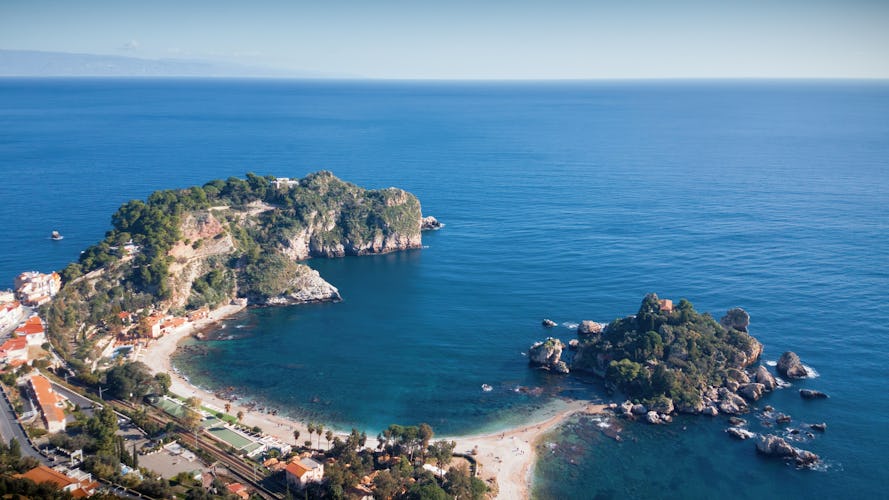
Fontane Bianche
The beach of Fontane Bianche can be found some 10 kilometres from Siracusa and is one of the most popular destinations for a day under the sun.
Here you will find about 1.5 kilometres of white sand and a warm sea that slopes gently, suitable for children of any age.
The beach owes its name to the numerous freshwater springs that arise on the seabed.
San Vito lo Capo
SItting on the far northwestern coast of Sicily is a beach that looks and feels incredibly Caribbean - San Vito lo Capo. Surrounded by mountainous terrain, San Vito lo Capo opens up to fields, vineyards, olive groves and a former fishing village of whitewashed seaside houses.
Here you can enjoy fine white sands touched by crystal clear waters and lofty palms. The wide bay provides plenty of space for water-based activities, including snorkelling or diving in the nearby coves and grottos.
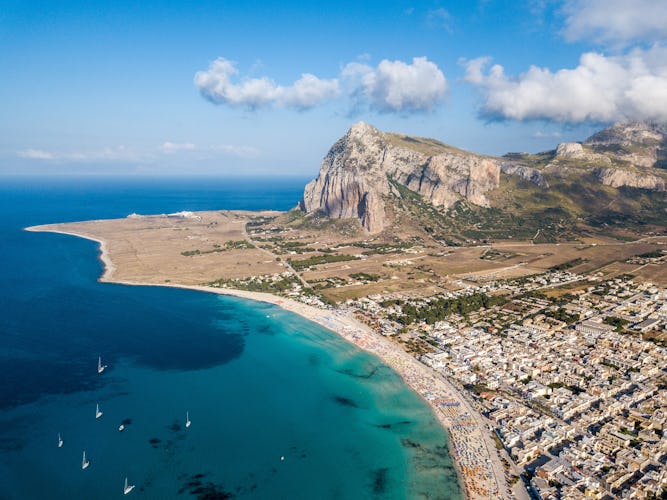
Mondello
Sitting within easy reach from the Sicilian capital, Mondello is just a 30-minute bus ride away from Palermo. A stretch of 1.5 kilometres of white sand and shallow azure sea await you here.
Besides the usual attractions and amenities found near any large beach like cafes and trattorias, Modello is the perfect place to take a stroll on its seafront promenade and explore the architectural beauty of local villas.
Marinello
Located on the northern coast of Sicily, near the ancient town of Tindari, Marinello beach offers long stretches of soft sand, making it the favourite beach among families. Protected lagoons of shallow water here are ideal for those with small children.
This region falls within a nature reserve and is famous for the incredible sea views toward the Aeolian Islands.
Perfect island weather
Due to its size, Sicily has several different climates:
Along the coastline and on the surrounding islands, the climate is Mediterranean with mild, moderately rainy winters and hot, dry summers.
In the interior of the island, the climate is slightly more continental on the hills, with moderately cold winters and hot summers.
The mountain areas can get relatively colder with almost regular snowfall. Wildly contrasting is the sight of Mount Etna, often snow-capped and towering above the city of Catania.
Sicily is subject to several winds, most notably the sirocco - the hot wind from Africa, which can significantly raise the island's temperature. Another frequently present wind is the mistral, which blows from the northwest and affects mainly the western part of the island.
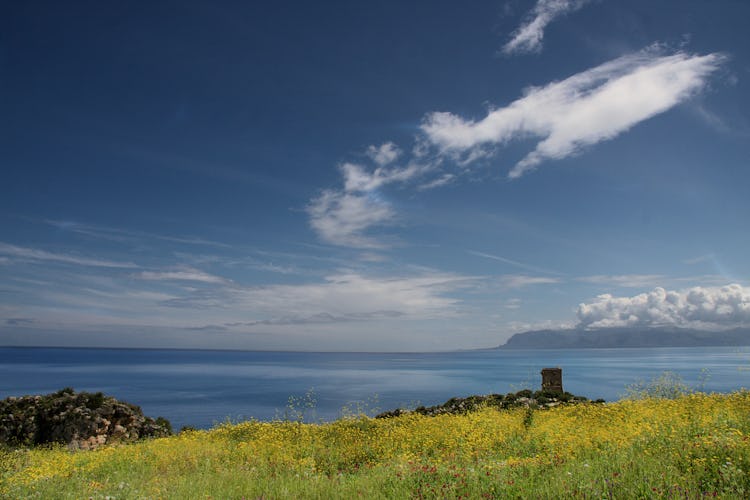
Best time to visit
Those looking to enjoy most of the Sicilian coastline and its beautiful beaches should look to visit the island in the summer, between June and September.
During the summer, there are many sunny days with temperatures regularly exceeding 30 °C and can even reach 40 °C on some occasions. So if you are planning your trip during the summer, bring extra sun protection. The sea temperature can reach up to 25 °C from July to August, making it ideal for water-based activities.
If you are looking to do more hiking and sightseeing, visiting during late spring or early autumn may prove to be a wiser choice. The temperatures won't be as high, but you will still have plenty of warm and dry days to go on about your vacation uninterrupted.
Sicilian culinary delights
As the melting pot of many different cultures, Sicily has developed its style of Italian cuisine.
It's not unusual to see couscous on the menu of local restaurants, an apparent reference to its Arabic influences, with traditional pasta served with various ingredients.
The extensive coastline provides great quantities of fresh and delicious seafood where sardines are a particular delight, served in various ways.
On the other hand, specialities like Pasta alla Norma highlight the fertile lands combining tomato, eggplant, and ricotta salata (with salted ricotta cheese) into one tasty dish.

Dessert holds a special place among Sicilians, known for their delicious arancini and world-famous cannoli.
Treats like Granita (crushed ice flavoured with fruit) and Cassata (sponge cake with liqueur, ricotta, and marzipan), as well as all kinds of unique gelato combinations, are ideally suited to remedy the warm weather and cool you off.
Wine island
According to some ancient archaeological findings, Sicily was one of the first Italian regions to practice the study of wine and wine-making (enology).
Over 80% of wine-growing on the island is concentrated in the provinces of Trapani, Agrigento and Palermo. Out of those regions, the Province of Trapani represents over 50% of the total amount.
Fertile land, plenty of hills and fair weather create perfect wine-growing conditions, which have produced some top-notch wines.
Especially popular are the wines from the region around Mount Etna, where the volcanic soil creates some distinct flavours.
Those wishing to go the gastronomy route while visiting Sicily should head on one of the many Wine Roads across the island and explore the unique flavours of this Mediterranean paradise.
Let us help you plan the perfect sailing trip
Provide your travel details, receive free offer and enjoy your holiday!
